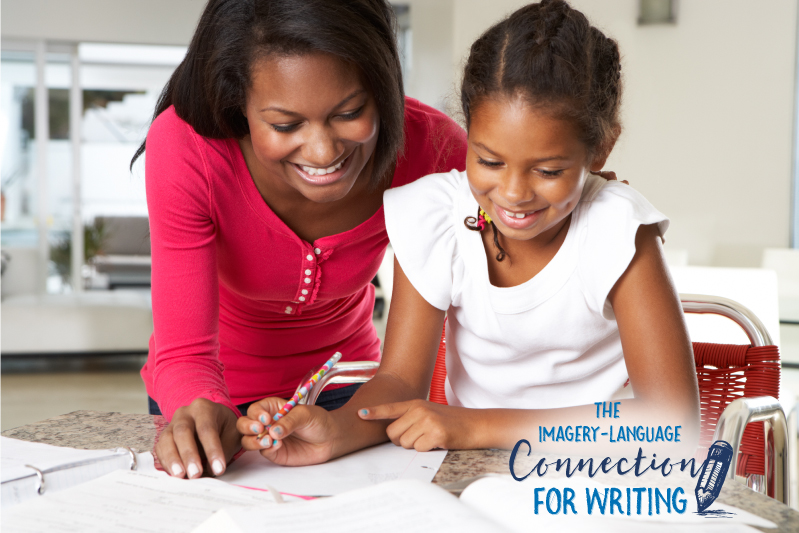
Book reports, essays, and even short responses, can cause frustration, panic, and, sometimes, even tears for many school age students. And it’s no wonder. Writing is a complex task that requires a lot: good thinking skills, organisation, spelling, grammar and punctuation, as well as ease with a pencil, or keyboard.
Writing can be particularly difficult for students who have an identified comprehension weakness. A primary cause of language comprehension problems is difficulty creating an imagined gestalt. This is called weak concept imagery. This weakness causes individuals to get only “parts” of information they read or hear, but not the whole. So without the “big picture” idea for a passage or book she just read, a student will have a hard time coming up with a strong paragraph. Writing is imaged thought.
Students who can write well are putting words to the images in their mind’s eye. The imagery-language connection is key to good thinking and communication. Try using language that stimulates imagery as you coach your child through their next writing assignment.
Start at the Beginning
Make sure your child understands the writing assignment. To gauge understanding, read the directions together and pause to see if she can picture the key details. For example, if the assignment is, “Choose your favorite character in your book. Write a paragraph about why they would make a good president” you can ask your child questions about what she is picturing like, “How long are you picturing the finished assignment will be?” and “What are you picturing for ‘prime minister’?”
Make a Plan
Before your child starts the next big writing assignment, work on a list of tasks to be completed. Use imagery-stimulating questions to ensure your child is understanding the purpose and goal of each. A book report might entail:
– read book
– take notes
– write outline
– write the first draft
– read my draft and edit
– write final
Work together to estimate how much time each task will take; and get them onto a timeline or calendar. Just like adults, kids prefer to check off smaller tasks as they go, rather than returning to one big daunting project.
Outline
Outlines are a great way to get ideas organised. Your child’s teacher may have suggestions or tools for organising paragraphs. Many graphic organisers (e.g. the “hamburger” method) are acceptable, as they reflect a classic paragraph structure:
A topic sentence / main idea
Detail #1
Detail #2
Detail #3
Conclusion: A closing sentence that links the details.
To get the most out of outlines, engage your child by using language that prompts imagery. Asking questions may help spur new ideas. For example, “What do you picture the pig is doing all day?”
Writing & Editing
Your student can follow her outline for keywords to use for writing the paragraph. Throughout the writing process, encourage your child to be connecting language and imagery. When writing, we are creating an image in the mind of the reader.
Give feedback about whether you can visualise her writing. For example, “Wow! I could really picture the red fox you described.”
When editing, encourage your child to find and correct words she may have misspelled.
We hope these tips for writing help your family throughout the school year! Nanci Bell, author of Visualizing and Verbalizing for Language Comprehension and Thinking, wrote, “Many students with language comprehension weakness may also have poor writing skills because they lack the imagery for the gestalt (whole). Attempts to teach them to write are hampered by their weakness in the nonverbal code of imagery. While often good in spelling, punctuation, and grammar, they still can’t write.”
If you’d like more information on language comprehension weakness and writing, please contact our Learning Centres at: Sydney Chatswood (02) 9410 1006; Sydney Double Bay (02) 9328 7119.
Teachers can explore our workshops that develop the imagery-language connection: Workshops Schedule.





